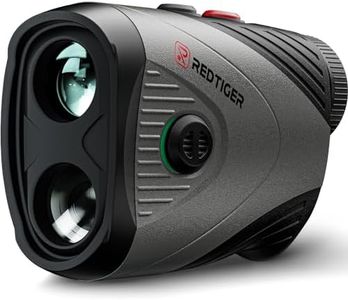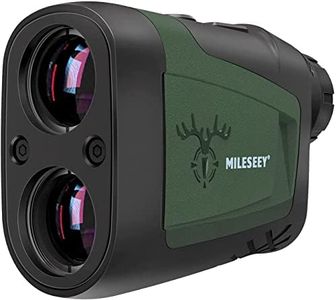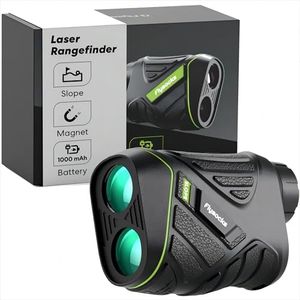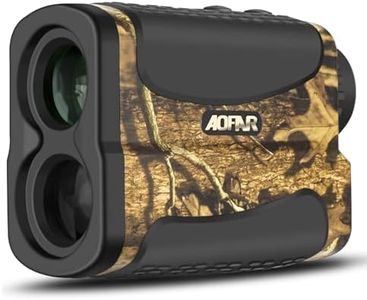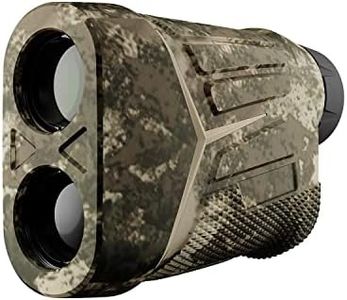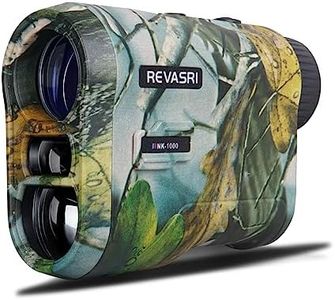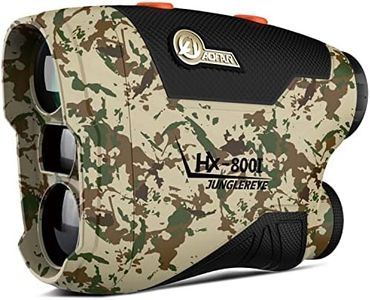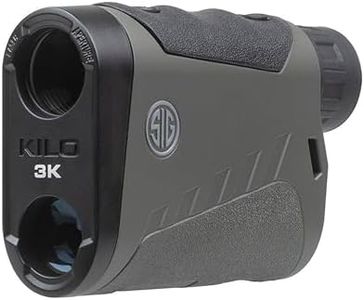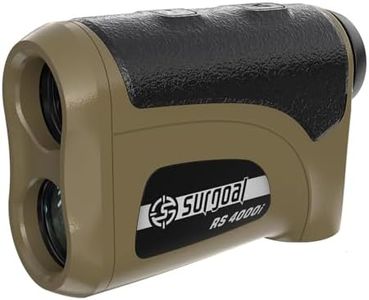We Use CookiesWe use cookies to enhance the security, performance,
functionality and for analytical and promotional activities. By continuing to browse this site you
are agreeing to our privacy policy
10 Best Hunting Rangefinders
From leading brands and best sellers available on the web.Buying Guide for the Best Hunting Rangefinders
Choosing a hunting rangefinder is all about finding a tool that fits your style, the environment you hunt in, and the type of game you pursue. A rangefinder is used to measure distances accurately, which can make a big difference in planning your shot and ensuring ethical hunting. The best way to pick one is to consider where and how you hunt most often, think about what features will really make your hunts easier or more successful, and learn a bit about the key specs that affect performance in real-world conditions.Maximum RangeMaximum range is the farthest distance the rangefinder can measure accurately, and it’s often the first spec you’ll see. This is important because it tells you how suitable the device is for the types of hunts you do. Entry level devices may max out around 500-800 yards, good for bowhunters or hunting in thick woods. Mid-range models often measure up to 1200-1600 yards, which works well for most rifle hunters. Top-tier models stretch beyond 2000 yards and are suited for open country or long-range shooting. Consider your effective hunting distance and choose a rangefinder that exceeds it a bit for flexibility, but don’t overpay for extra range you’ll never use.
AccuracyAccuracy tells you how close the rangefinder’s readings will be to the actual distance. It is usually given as a margin of error (for example, ±1 yard). For most hunting purposes, the difference between ±1 yard and ±3 yards may not matter for rifle hunters, but bowhunters or those making precise shots should seek the tightest accuracy possible. Evaluate your needs based on your weapon and distance—closer ranges and archery demand higher accuracy.
Optical Quality (Magnification and Lens Coating)Optical quality includes aspects like magnification (usually 4x to 8x) and the coatings on the lenses that improve brightness and clarity. Higher magnification makes it easier to spot small targets at long range, but too high might make it harder to steady your view. Better lens coatings help you see clearly in poor light—very useful at dawn or dusk when animals are active. Decide how far you tend to spot and shoot, and whether you hunt in low-light; then pick optical features that match.
Size and WeightSize and weight can make a difference in comfort when you’re carrying gear all day. Smaller, lighter rangefinders are easier to carry and quick to use, but may have fewer features or a dimmer view. Larger models can be more comfortable to hold steady and might work better with gloves, but can weigh your pack down. If you do a lot of walking or want something easy to slip into a pocket, go for compact. If you mostly hunt from a stand or blind, a bigger unit might not bother you.
Scan and Angle Compensation ModesScan mode allows you to keep measuring distances as you move the rangefinder across a landscape, helping you quickly size up multiple targets. Angle compensation (sometimes called ballistic or ARC mode) calculates the true horizontal distance when you’re shooting up or downhill—crucial for mountain or tree stand hunters. If your hunting situations involve angled shots, this feature is a must; if you always hunt on flat land, it may not be as important.
Durability and Weather ResistanceDurability refers to how well the rangefinder stands up to the elements, and weather resistance means it can keep working in rain, fog, or cold. Some rangefinders are waterproof or have rubber armor for shock protection. Match these qualities to your hunting environment—backcountry or all-weather hunters should prioritize durable and weather-resistant models, while fair-weather hunters may not need as much ruggedness.
Ease of Use (Display and Controls)Ease of use includes things like how clearly you can read the display, how quick the controls are, and whether you can operate it with gloves on. Simple, intuitive controls make it faster and less distracting to measure distance. If you tend to hunt in challenging conditions, choose a model with a bright readout and buttons you can use easily by feel.
